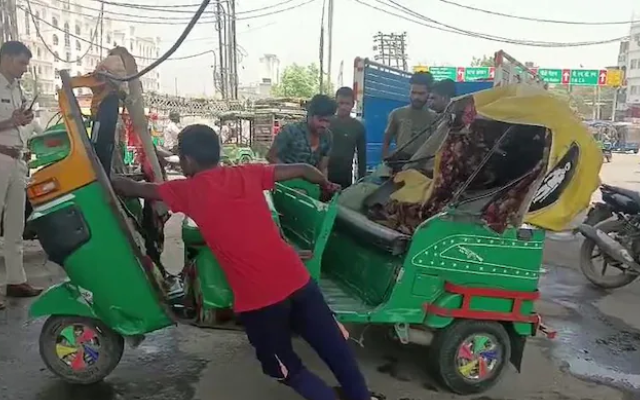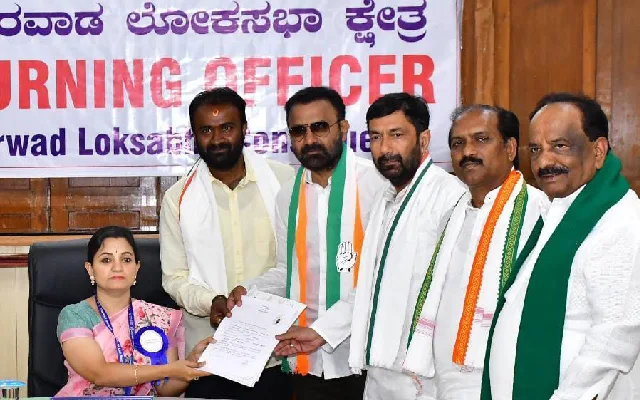The suicide of farmer Gajendra Singh in full public view at an Aam Aadmi Party rally in Delhi yesterday (22 April) became a television spectacle that sparked both TRP and political wars, was not an isolated incident. It has been happening regularly across the country, mainly in the cow belt states. The Agrarian Crisis, has been politicized so much that it has even been used as a political comeback vehicle for the atypical farmer and Aam Admi, Rahul Gandhi. Farm distress is a crisis of massive proportions that has reached this level due to years of neglect.
The Economic Times today (23 April) puts the number of farmer suicides in 2013 at 11,772. That’s in 2013, they have increased even more in the last two years, with some putting the figure at nearly 15000. Even though the figures relate to “accidental deaths and suicides in India” and may not all be real farmer suicides, the situation warrants serious attention.

Where lies the problem?
Politicians being who they are, want instant solutions, that raise their vote shares. The solutions must be seen as flowing from them and by them. The only solutions they have come up in all these years is Subsidy, Debt Waiver, and increase in Minimum Support Prices (MSP’s).. But these do not address the problem from its roots, they remain at the top of the solution tree and tend to tend to lose their utility with the change in season. Unless the soil is treated, figuratively speaking, the problem will continue to fester and suicides will continue, a different set, a different location each year.
Rs 2,00,000 crore of food and fertiliser subsidies, and possibly another Rs 1,00,000 crore of other subsidies (in power, fuel, seeds, etc) every year has not made farming viable and never will for productivity is very low – More than 50 percent of the population generates barely 15 percent of GDP. Why you may ask.
India’s total land under cultivation has remained fixed at 140-150 million hectares for over 40 years, but the number of farmers trying to make a living from farming has doubled. We are adding one crore additional farmers every five years – a demographic curse rather than a dividend. The average size of an Indian farm holding has fallen from two hectares to 1.15 between 1976 and now, and it is falling further and this is the problem. Small holdings do create investable surpluses, rely on primitive agricultural technology and methods, which have limited utility. This is compounded with poor irrigation and storage, transportation and selling infrastructure.
Prakash Bakshi, former chairman of the National Bank for Agriculture and Rural Development (Nabard) told The Economic Times a while ago: “Indian agriculture is undergoing heavy stress as average land holdings are decreasing day by day. Our acreage has remained at 140 million hectares since 40 years but the number of farmers has increased from seven crore to 14 crore. With smaller land at (their) disposal, there is a decrease in farmers’ capacity to invest in land. With average land holding halved, the cost of getting inputs and time consumed has doubled. If these are not tackled now, it will be difficult to maintain agriculture as a feasible profession.”
The solutions
Now there are two ways to go about finding a solution – moving the excessive farmers away from their farms by building industrial corridors as proposed by the BJP government in their amended Land Acquisition bill, or find a way to sustain agriculture and make it profitable for the farmer. The latter would require solutions beyond the occasional debt waiver, subsidizing Power, Irrigation, and seeds, excessively supporting minimum prices and excluding big farmers from the income tax net which gives big farmers an unfair advantage over small farmers.
If we take all these subsidies and benefits together, it is highly likely that Indian agriculture receives benefits in excess of Rs 3,00,000 crore every year between centre and states and bankers. The question to be asked is: if Rs 3 lakh crore every year is not good enough to make farming viable for the bulk of India’s farmers, the remedy cannot be to subsidise them even more in the same way. If we do so, we will be neither doing the farmers nor the country any favour.
Barring payments for short-term disasters and distress, the money spent on agriculture needs to be redirected elsewhere: to irrigation, to research in better seeds and pesticides, to rural roads, to cold storages, etc.
Smart solutions for better agriculture output from Israel.
Israel is small country, the size of one of the states of India, practically a desert, with very little natural irrigation and a large population for its geographical size. But, no other single country – certainly not one as young and as tiny as Israel – has contributed more breakthroughs in agriculture, which have been born out of necessity.
Since the 1950s, Israelis have not only been finding miraculous ways to green their own desert but have shared their discoveries far and wide through various channels, including Israel’s Agency for International Development Cooperation at the Ministry of Foreign Affairs.
Lets look at the innovative methods of Agriculture in Israel from the point of view being applicable to India in its hour of crisis.
1. Drip irrigation
Probably no other advancement has been quite as significant. While the concept of drip irrigation existed well before Israeli statehood, it was revolutionized by Israeli water engineer Simcha Blass, who serendipitously discovered that a slow and balanced drip led to remarkable growth. He created tubing that slowly released water where it was most effective, and in 1965 Kibbutz Hatzerim built a whole new industry, Netafim, based on his invention. Israeli drip and micro-irrigation solutions rapidly spread worldwide.
The newest models are self-cleaning and maintain uniform flow rate regardless of water quality and pressure. ‘Tipa’ or literally ‘drop’ an Israeli developed kit has helped that has allowed 700 farming families in Senegal to reap crops three times a year instead of just once, even on infertile land. It is available in India, but needs widespread implementation at a lower cost.
2. Grain cocoons
Israeli-designed GrainPro Cocoons provide a surprisingly simple and cheap way for African and Asian farmers to keep their grain market-fresh. The huge bags, invented by international food technology consultant Prof. Shlomo Navarro, keep both water and air out. They’re used all over the developed world, including Africa and the Far East, and even in countries that have no diplomatic ties to Israel, such as Pakistan.
As much as 50 percent of every grain harvest and 100% of every pulse harvest is lost to pests and mold. Here in India food grains rot in the open as the FCI warehouses are insufficient or inefficient. Subsistence farmers in developing countries tend to store their crops in primitive baskets or bags, which are not effective in keeping hungry bugs and micro-contaminants out. The Cocoon solves that problem, even in extreme heat and humidity.
3. Squeezing every drop of water from the air
Tal-Ya Water Technologies developed reusable plastic trays to collect dew from the air, reducing the water needed by crops or trees by up to 50 percent.
The square serrated trays, made from non-PET recycled and recyclable plastic with UV filters and a limestone additive, surround each plant or tree. With overnight temperature change, dew forms on both surfaces of the Tal-Ya tray, which funnels the dew and condensation straight to the roots. If it rains, the trays heighten the effect of each millimeter of water 27 times over. Inventor and CEO Avraham Tamir said that the trays also block the sun so weeds can’t take root, and protect the plants from extreme temperature shifts. “Farmers need to use much less water, and in turn much less fertilizer on the crop,” which translates to less groundwater contamination.
4. Unparalleled crop protection
Two years ago, Hebrew University’s tech-transfer company teamed with Makhteshim Agan, aworld leader in crop protection products, to develop and commercialize slow-release herbicides and a targeted insecticide that doesn’t harm beneficial insects.
The total worldwide herbicide market is valued at more than $15 billion, of which approximately a quarter is dedicated to soil-applied herbicides and other pesticides. The Israeli approach incorporates herbicides into micelles or vesicles, which are absorbed onto negatively charged clay minerals to enable a slow and controlled release, reducing leaching to deeper soil layers. This enhances efficiency and reduces the required doses.
The novel insecticide kills caterpillars of night-flying moths – a common scourge for farmers worldwide – but unlike common commercial preparations, has minimal or no effect on any other creature. High levels of control can be achieved with much less product, greatly minimizing environmental impact.
5. Fishing in the desert
Overfishing is a serious threat to the food supply, a grave situation since fish is the main source of protein for hundreds of millions of people. But what if fish could be raised virtually anywhere, even in the desert? That is just what the Israel’s GFA (Grow Fish Anywhere) Advanced Systems has made possible.
The Israeli “zero-discharge” system eliminates the environmental problems in conventional fish farming, and doesn’t depend on electricity or proximity to a body of water. Specially developed microbes purify fish waste byproducts right in the tank, with no need for spillage and refilling.
The largest facility using GFA technology, in New York, produced about 100 tons of sea bream, bass and tilapia in 2010.
6. Food from greenhouse gas
Israel’s Seambiotic clean-tech company recently launched a commercial algae farm in China and does business in the United States and Italy as well.
People don’t eat algae, but algae ponds nourished by power-plant effluent conserve farmed produce for human consumption because they generate 30 times more feedstock for biofuel than do land-based crop alternatives.
Plus, the tiny plants, which thrive on carbon dioxide and sunlight, produce a valuable nutraceutical food additive that is especially popular in the Far East.
7. Hardier seeds for better crops
Hebrew University agricultural scientists Ilan Sela and Haim D. Rabinowitch developed TraitUP, a trademarked technology that enables the introduction of genetic materials into seeds without modifying their DNA. This method immediately and efficiently improves plants before they’re even sowed.
The university’s Yissum Research Development technology transfer company licensed the seed treatment technology to Morflora Israel for curing fruit-tree diseases in orchards and groves, and for seedling treatment in the nursery.
“The new ability to deliver traits within days instead of years, and to offer a treatment with results similar to breeding to all current species, answers a long and unmet need that will revolutionize modern agriculture and significantly impact the vegetable and commodity crop markets,” said Dotan Peleg, CEO of Morflora.
8. Agriculture cooperatives
Each of these methods holds the promise of better agriculture output and profits for Small farmers. However the key is sustainable irrigation which can only be had from desalination and canalization. This requires huge sums of money and agricultural subsidies are best directed towards this.
Another method is cooperative irrigation which really means small projects undertaken by agricultural cooperatives at the village level. An agricultural cooperative, should not restrain itself to purchasing produce from farmers, but go beyond – provide the technical equipment, knowhow and the storage support at the village level supported by the government.
These methods require a lot perseverance to implement, but can make lives of our farmers, hopeful and preserve our food security.

















